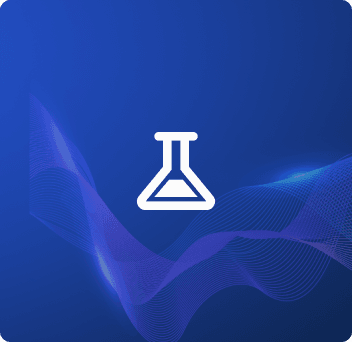Updated: November 18, 2024- 11 min read
Companies are constantly searching for better ways to drive revenue and scale growth. One approach that’s gaining traction among product companies is product-led sales (PLS).
Unlike traditional sales models, PLS shifts the focus to the product itself as the primary driver of engagement and conversion. The strategy aligns seamlessly with how modern buyers prefer to evaluate, test, and adopt products — on their own terms.
What sets Product-Led Sales (PLS) apart from Sales-Led Growth (SLG) and Product-Led Growth (PLG), if anything?
While both center around product value, they deploy different tactics to meet sales targets. Understanding this distinction is crucial for companies looking to harness the right approach for sustainable success.
Here, we will delve into the core characteristics of PLS and examine why it can be the right approach, explore the key aspects, and highlight the right strategy to implement PLS.
Product Experimentation Certification
Scale growth through data-driven testing. Use AI to optimize acquisition, retention, pricing, and build a culture of high-velocity experiments.
Enroll now
What Is Product-Led Sales?
Product-led sales (PLS) is an approach that uses the product as the primary vehicle for driving conversions and accelerating sales. Sales teams don’t lead with pitches, demos, or case studies; PLS puts the product front and center. Here, users experience the product's value firsthand before committing to a purchase.
The core idea behind PLS is simple: the product itself should do the heavy lifting in convincing users to buy.
This approach combines characteristics of both Product-Led Growth (PLG) and Sales-Led Growth, making it a hybrid that leverages the product’s intrinsic value while using strategic human intervention to close the deal.
In PLS, sales strategies are driven by product analytics, user interactions, and behavior insights, using data to track which features users engage with, how often they use them, and when they reach critical milestones.
PLS works especially well for Product-led Growth (PLG) Companies where products are designed to be intuitive and deliver value quickly, often through freemium models, free trials, or self-service onboarding.
However, PLS doesn't replace the need for human interaction. Instead, it complements traditional sales, allowing sales teams to step in at the right moment — when users are most engaged and primed to purchase. Sales teams become consultants rather than persuaders.
How PLS Works Across Departments
PLS requires a shift in mindset. It requires cross-functional collaboration between product, marketing, and sales teams, all aligned around delivering value through the product experience.
This collaboration often means adjusting Product-Led Growth Metrics, incentives, and communication flows to ensure that sales teams prioritize product-qualified leads (PQLs) — users whose in-product behavior signals strong buying intent. It’s why we teach this in our Product Growth Certification.
Here's how PLS typically plays out:
Product Team: Develop a product that can 'sell itself' by prioritizing user experience, clear value propositions, and seamless onboarding. Product teams also make sure the product can generate data on user behavior, which is key to identifying conversion signals.
Sales Team: Instead of cold-calling leads, the sales team uses product adoption data to guide conversations. In their collaboration with the product, they identify product-qualified leads who are highly engaged with the product. Sales reps then focus their efforts on these high-potential users. They guide them through any questions, help with custom use cases, or support complex implementation needs.
Marketing Team: Works on generating awareness, driving free trials, and creating content that showcases product value. In a PLS framework, marketing is aligned closely with sales to ensure that product messaging resonates with users who are already interacting with the product.
Customer Success: Once users convert, customer success teams step in to deepen product adoption. They focus on expanding the user’s engagement, helping them discover new features, and driving long-term retention — all of which feed back into the PLS cycle.
Who Leads Product-Led Sales?
Pushing product people to spend time as customer care agents or shadowing sales helps create real empathy for users beyond just metrics.
— Fabrice des Mazery, Former CPO at Tripadvisor, on The Product Podcast
Ownership of PLS can vary depending on the organization. In many cases, it’s led by the Chief Revenue Officer (CRO) or a VP of Growth, since these roles are already oriented toward both sales and user experience. In other organizations, the Chief Product Officer (CPO) might take the lead, as PLS is tightly interlinked with how the product is built and delivered. In smaller companies, you may see Heads of Product, Senior Product Managers, Growth Product Managers, or even Heads of Sales taking charge of PLS efforts.
No matter the specific title, the leader of PLS needs to have a deep understanding of the product, a collaborative approach with cross-functional teams, and a data-driven mindset.
The Impact of Product-Led Sales Strategy
PLS changes the nature of how companies interact with users. By letting users discover value on their own terms, it reduces friction in the sales cycle and increases conversion rates, often leading to more committed and satisfied customers.
The impact extends beyond just better conversion, of course.
Companies that embrace PLS often see more efficient customer onboarding, improved user retention, and faster sales cycles, which all contribute to growth. Additionally, the insights gathered through product metrics help product teams refine and prioritize feature development, avoid feature creeps, and build excellent product experiences.
PLS Relation to Product Management
PLS is deeply related to product management, as product managers impact PLS execution to a large degree.
They ensure the product is designed to attract users, enable self-service, and deliver enough value to trigger buying decisions. PLS also impacts how product managers think about metrics: instead of just focusing on active users or NPS, they pay closer attention to product adoption metrics like activation rates, PQL to SQL ratio, and expansion rates — all of which are aligned with sales outcomes.
Why Product-Led Sales is a Winning Strategy for Companies
Here are the reasons why Product-Led Sales (PLS) can be a winning strategy and when it works best:
Shorter Sales Cycles: PLS enables users to experience the product's value quickly, accelerating decision-making and reducing the time needed to close deals.
Lower Customer Acquisition Costs (CAC): By leveraging in-product engagement to qualify leads, PLS minimizes the need for extensive marketing and sales outreach.
Increased Conversion Rates: Users who experience the product firsthand are more likely to convert, as they’ve already seen its value. This makes PLS a strong driver of higher conversion rates.
Scalable Sales Model: With a self-serve component at its core, PLS allows companies to handle a larger volume of leads without needing a massive sales team.
Better User Retention: Because users are more familiar with the product before purchasing, they tend to be more satisfied and loyal.
Improved Product-Market Fit: PLS offers direct insights into user behavior, helping teams identify which features resonate the most, guiding product development and refinement.
More Predictable Revenue Growth: With a data-driven approach, PLS provides clearer insights into when users are ready to buy, allowing for more predictable and consistent sales outcomes.
Ideal for Freemium or Free Trial Models: PLS thrives when companies have freemium models or free trials. These allow users to engage with the product before committing to a paid version.
Works for Complex Products: If the product requires users to explore multiple features to see its full value, PLS can help guide users gradually while maintaining their interest.
Effective for Self-Serve Products: PLS is a winning strategy for products designed for self-service, as it aligns well with users’ preference to explore independently before reaching out to sales.
PLG vs PLS: What Are the Differences?

Product-led growth (PLG) and product-led sales (PLS) are closely related concepts, often intertwined in the same business strategy. However, they serve different functions and have distinct applications.
At its heart, Product-Led Growth is an overarching business philosophy that centers every effort around the product itself. It’s built on the idea that users should be able to experience the product’s value as early and easily as possible.
PLG works well when users can quickly understand a product's value without a lot of hand-holding. For example, take Zoom, one of many Product-Led Growth examples: it offers free access to core features, allowing users to host meetings right away. The product sells itself because users can immediately experience its functionality and benefits.
PLG is more than just a strategy; it’s a mindset. It’s about aligning teams around a common goal: creating a product experience so good that users naturally want to adopt, share, and pay for it. It's a broad, growth-driven approach that impacts how the whole organization operates.
While PLG is about driving initial adoption and engagement, Product-Led Sales is about converting that engagement into revenue.
PLS uses in-product data to identify and engage potential customers, focusing on users whose behavior signals readiness to buy. PLS doesn’t replace product-driven growth but enhances it by adding a layer of personalized sales support where it matters most.
An example of PLS can be seen in HubSpot’s approach. While HubSpot’s CRM offers free access to core features, the sales team steps in when users start exploring more advanced tools, like automated workflows or reporting features. At that point, sales reps engage users to provide targeted help and showcase higher-tier offerings. Here, the product lays the groundwork, but the sales team drives the final conversion.
The Relationship Between PLG and PLS
PLG and PLS aren’t opposing strategies; they’re complementary.
PLG sets the stage for engagement, while PLS ensures that engagement leads to sales. PLG is broad and qualitative — it drives initial adoption through inbound efforts. PLS, however, is specific and quantitative, relying on user behavior data to determine which leads to pursue. PLG creates awareness and user engagement; PLS transforms that engagement into revenue.
You can think of PLS as a tactical extension of PLG. It’s part of the broader PLG mindset but focuses on a specific goal. It’s essentially a more hands-on, sales-focused iteration of PLG.
Drawbacks of Product-Led Sales (PLS)
1. Misalignment Between Sales and Product Teams
PLS demands seamless collaboration between sales and product teams. Without clear alignment, sales reps might lack insights into user behavior and how to prioritize leads effectively.
On the other hand, product teams may overlook sales needs in favor of feature development, resulting in inconsistent messaging, missed conversion opportunities, and reduced sales effectiveness.
2. Limited Effectiveness for Complex Products
While PLS works well for straightforward products, it can struggle with more complex solutions. Extensive setups and heavy customization are not its best friends. Users may not fully understand the product’s potential on their own. This can lead to slower conversions or abandoned trials.
This makes it necessary to complement PLS with more traditional sales methods for products that need guidance to grasp fully.
3. Data Dependency Challenges
PLS relies heavily on in-product data to identify potential leads and guide sales interactions. Inadequate data product strategy or data product management can hinder the identification of high-potential users. As a result, teams end up with inefficient sales efforts, missed opportunities, and ineffective outreach.
4. Increased Pressure on Product Quality and UX
In PLS, the product must consistently deliver value. If the product is buggy, unintuitive, or difficult to use, users are likely to abandon it before engaging with sales.
Any gaps in user experience can drastically reduce conversion rates, making heavy investments in product development and UX optimization crucial.
5. Scaling Challenges
As PLS scales, managing large volumes of user data, engagement points, and personalized outreach becomes increasingly complex. Advanced automation, product analytics, and a well-integrated product stack are essential to avoid bottlenecks, inconsistent user experiences, and slower response times.
6. Longer Onboarding Times for Sales Teams
PLS requires sales reps to have a deep understanding of the product and the ability to interpret usage data. This often results in longer onboarding and training periods. You can guestimate how these slow down conversion rates and revenue growth which makes the implementation of PLS more resource-intensive.
These drawbacks illustrate that while PLS is a powerful strategy, it requires the right infrastructure, a strong product experience, and cohesive cross-team efforts to be effective.
Product-Led Sales: The Path to Higher Conversions
If you’re ready to let your product do the heavy lifting, it’s time to embrace Product-Led Sales. It’s not just a strategy—it’s a smarter, faster way to drive growth.
Year by year, you’ll see more product teams and SaaS companies investing heavily in Product-led Sales. Smart companies simply don’t want to wait for potential customers to slip through the cracks — they use data, leverage the product, and equip their sales team to close the deal where it counts.
So, the best time to start implementing Product-Led Sales is today. Later on you can watch your efforts reap fruit.
Product-Led Growth Micro-Certification (PLGC)™️
Experience the game-changing potential of Product-Led Growth (PLG) as it revolutionizes the role of Product Managers and their impact on organizations.
Enroll now for free
Updated: November 18, 2024





